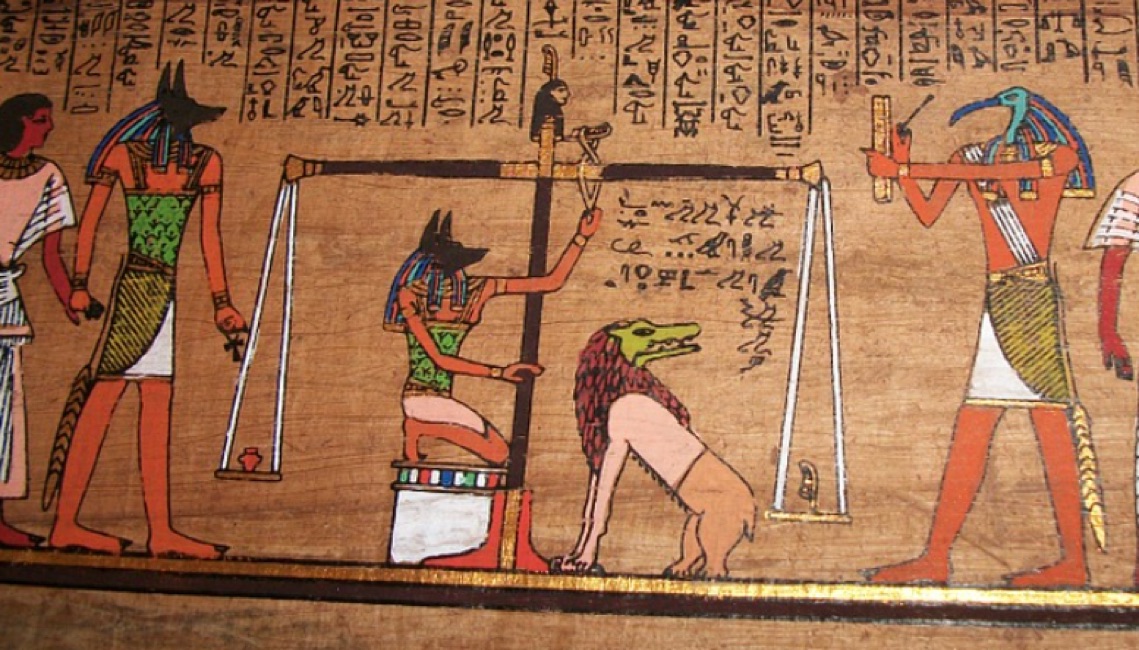

Hotep.Org
Imhotep’s Information Exchange
Know Thyself
In Ancient Khemet, (today known as Egypt) above the entrance of each temple and Grand Lodge, serving as an academic and scientific learning center, appeared the ancient symbols for the phrase:
“Man Know Thyself.”
Irrespective of gender, we simplify the phrase to: KNOW THYSELF.
This is the Ultimate I.Q. Test. Your book is read before the Scales of MaaT.
One’s Heart is measures against the Feather of Truth.
Knowledge of self has always been the root of a complete and thorough education in the ancient Khemetic education or ‘Initiation System’ (called the Mystery System by western historians).
The word education comes for the Latin term, Educare (pronounced ee-do-sa-ray) meaning to lead forth, to bring out, and to rear up. Thus, the true source of knowledge and education begins deep inside each person. Education is literally supposed to bring out the best in everyone. A good Education must recognize the students’ talents and interest. A good Education empowers them to excel at their strengths, while identifying and improving any weaknesses.
Our ancestors of Khemet carefully handled educating new students called ‘Initiates’. Khemet, also known as Ta-Merry, is one of the indigenous names for the region of the Nile River Valley. Before our Khemetic ancestors would permit the new initiates to even enter the sacred education process, the new students were first required to purge themselves of physical, spiritual and mental toxins. In preparation for an ancient education, the initiate had to undergo a cleansing. This included fasting, meditation and supplication to humble the inner spirit and harness the human passions.
Once one gains a full understanding and acceptance of personal tendencies, motivations, positives and negatives, the journey can begin toward applying the Knowledge of Self. This will empower us to access our inherent gifts from the Creator and cultivate the wisdom that is gained from personal, spiritual and academic experiences.
QUIET AS KEPT
The word Paper comes from Papyrus. Paper was first made in Ancient Africa (known as Alkebu-Lan, among other indigenous names). The PAPYRUS plant is the source of the fibers used to create the first paper in the world and only grows along the banks on the Nile River.
Metu Neter, (pronounced ‘Medu Netter’) or sacred script, is the oldest writing in the world. The Greek name, Hieroglyphics, is the most commonly used term for humans’ first alphabet.
The first schools, universities and institutions of Higher Learning started in Khemet along the banks of the Nile River (the River of the God Hapi).
Most of the prominent Greek philosophers and scholars got their training or information studying in ancient Egyptian temples, tombs and lodges. These philosophers included: *Herodotus, the Greek Father of History, who spent 23 years attending schools in Ancient Egypt.
More notable foreign student philosophers visiting Khemet include; Thales, Anaximander, Pythagoras and Solon. They would slip out of Greece via Elea, near the Etruscan Peninsula (today called Italy); enter Alkebu-Lan (today called Afrika or “Africa”), pass through modern-day Libya (Ancient Mauretania or Carthage) and pilgrim to the Nile Valley along the Mediterrean Coast. An opportunity to study at the temples of Wa’rit and Waset, of modern-day Luxor and Karnak Temples on the banks of the Nile River, was the greatest goal for scholars and initiates from all over the world.
The world’s first hospitals, doctors, surgeons, and medical schools originated within Nile Valley Civilizations.
Imhotep, the world’s first multi-genius, was called ‘Imouthes’ in Greece and deified as Aesculapius, the Greek god of Medicine. Today, most doctors are aware of the Hippocratic Oath and its pledge referencing the Proverb-maker, Imhotep.
Loosely translated, “He who Cometh in Peace”, Imhotep was Chief Physician and Grand Vizier (Prime Minister) to King Zoser, the Egyptian Pharoah in the 3rd Dynasty (5345-5307) B.C. But, he was more than just a noble statesman and doctor. Imhotep was also an astronomer, mathematician, engineer, poet, musician, philosopher, and the architect who designed and constructed the first stone building, the step pyramid of Sakkara near Cairo, Egypt, defining architecture for the world.
Rule No. 1: Self Knowledge

HOTEP.ORG 2022

VISIT SOME OF OUR FEATURED FAVORITES AFFILIATES AT:



